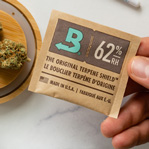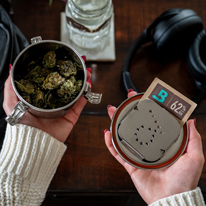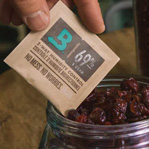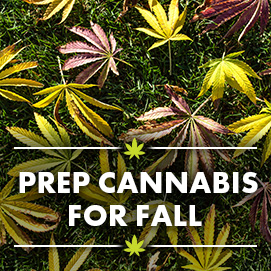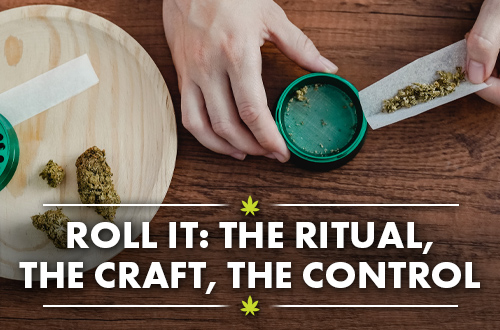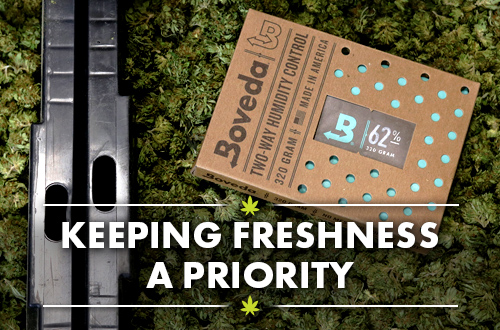It’s been said that the definition of insanity is doing the same thing over and over and expecting different results. Tell this to my friend Margaret whose cat scratched her on the ankle months ago. What started out as an innocent abrasion soon became more and more inflamed. Today that scratch has developed into a dangerous and rare skin condition called Pyoderma Gangrenosum.
In the past several months, normal routes of treatment have been explored and exhausted. Oral antibiotics and oral steroids. Then topical antibiotics and topical steroids. So many side effects and so much pain! Cat scratch fever has nothin’ on this bacterium!
Every single day, health care workers come to Margaret’s condo to clean and bandage this ever-growing painful skin ulcer. They’re doing the same thing over and over again and expecting it to suddenly heal, the bacteria to suddenly die, the skin to suddenly start growing again. Margaret’s future days will undoubtedly be filled with this same repetition of attempted sterilization, antibacterial topical treatment and rebandaging. To Margaret, it truly feels like insanity.
Ingeniously pervasive and adaptable microorganisms, like the one plaguing Margaret, frequently elude traditional healing protocols. Even the most efficient sterilization methods can’t kill some of these conditions. Just look at MRSA—an infection that’s become resistant to many of the antibiotics used to treat ordinary staph infections. Every single day these miniscule organisms disprove the correlation between size and survival.
Alas, our current healthcare industry relies on strict guidelines for treatment. But fighting adaptive microorganisms takes some out-of-the-box thinking. Thankfully, many scientists and researchers are starting to explore oft-shunned treatments, including medicinal cannabis.
An alternative therapy for someone like Margaret could include topical cannabis oil for wound care, which would normally never be considered.
HOW CANNABIS CAN HELP WITH PAIN AND HEALING
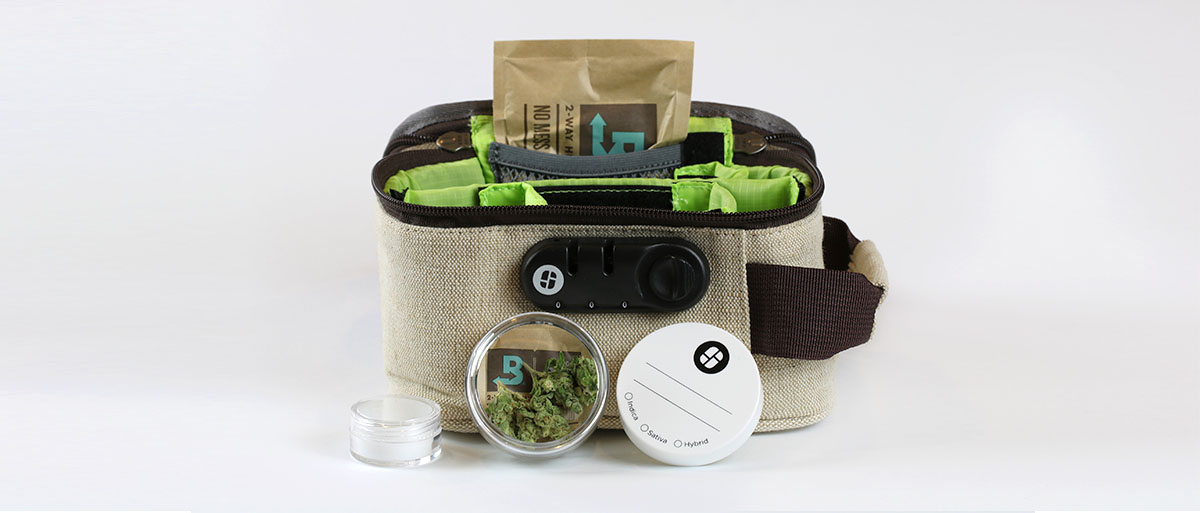
On the surface of our skin cells, there are cannabinoid (CB2) receptors. Cannabis oil binds to these CB2 receptors, which activates our endocannabinoid system. A 2016 study showed that activating CB2 receptors immediately resulted in lowered inflammation, lessened pus output, accelerated production of tissue and accelerated skin healing and closure.
In other words, better healing through cannabis oil. Although Margaret’s condition is rare, it’s been studied extensively. In three separate cases, one study found cannabinoid therapy effectively reduced patients’ pain by activating CB2 receptors.
For thousands of years, extracts from flower have been used to soothe wounds. So why is Western medicine so hesitant to use topical medicinal cannabis to promote healing and manage pain?
It’s high time Western medicine recognizes and harnesses the power of cannabinoids.
Many herbal programs continue to be restrictive. Qualifying medical conditions are limited. And few delivery methods exist, including oils, caplets and flower. Of course, patients can smoke or vape flower or make edibles from it. But if you’re looking to convert flower into something else, say a medicated lozenge, that’s not an easy task. It’s important to work with an experienced cannabis clinician to advise on usage and dosage. Treatment can vary greatly among patients—even when treating the same condition.
But back to Margaret. Her condition is so dire that she’s been referred to a leading dermatologist in Canada. He’s a big-wig who has seen it all and treats the worst of the worst skin conditions. I urged both Margaret and her son to print the legitimate research I referred to in this post, including the study that used cannabis oil to successfully treat Pyoderma Gangrenosum.
This kicker is—Margaret is a legal cannabis patient, using the oil throughout the day to treat both anxiety and chronic pain.
Although she didn’t arm herself with the studies, she did mention that she had legal cannabis oil at home. Canada’s leading dermatological specialist laughed at Margaret and her son. Talk about shutting down a collaborative conversation about medicinal cannabis. So Margaret’s torturous daily bandage changings continue, still.
When neither Margaret nor her son shared the studies with that specialist, I was disappointed. But I totally understood. Not everyone is eager to school medical professionals about herbal medicine. But I welcome the opportunity! Why?
I believe that most physicians are healers at heart. Healers who
myopically look through one traditional pharmaceutical lens.
I’ve found sharing even a small amount of information can spur a conversation that can lead to education. Many a physician has been tickled pink and raring to learn more about this incredibly healing plant. After all, that’s what healthcare professionals should strive for–healing.
As that African proverb states: “It takes a community!” So if you’re a cannabis patient, please spread the good word about cannabis everywhere you go.
HOW TO START A CANNABIS CONVERSATION WITH YOUR DOCTOR
Doctors are busy and often overbooked. Their knowledge of herbal medicine is often lagging. When it comes to educating your healthcare provider about cannabis, know your audience.
- Break the ice using science to get an MD’s attention. Doctors are all about research studies involving humans.
- Type in your condition and cannabis into your search engine (for example, MS and cannabis). See if anyone has used cannabinoids to successfully treat your ailment.
- Find a few clinical studies or case reports about patients who used cannabis to treat your particular health concern.
- Print out any research you find and bring it with you to your appointment. Had Margaret shown this specialist those studies, he may have taken her more seriously.
- Emphasize the term “companion medicine” with medical professionals–sounds less risky. Talk about adding this plant’s compounds as a companion medication to your current routine.
Condition not a qualifying condition for medicinal cannabis use?
Here’s what you can do.
Pain, nausea, insomnia, etc. Many patients’ symptoms and side effects have been successfully treated with cannabinoids. If a patient wants to willingly stop taking harmful pain medications to try cannabis, doctors tend to listen. (Especially since they’re finally recognizing the dangers of over prescribing opioids)
Not all doctors, however, are willing to give cannabinoids a try. So find a doctor who will think outside the box. Luckily, more and more healers are learning about our body’s endocannabinoid system. As each new medical condition is treated successfully with cannabis, the qualify conditions list will grow.
CANNABIS TOPICALS–WHY START WITH FRESH FLOWER
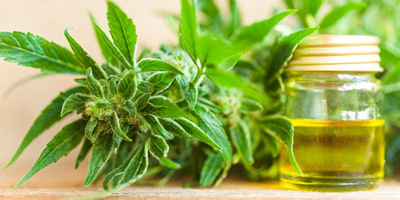
Creating your own cannabis topicals or buying oils from a dispensary? Whether you’re a home grower or patient, derive cannabis oil from fresh flower to optimize therapeutic benefits. And well-hydrated flower produces better extract yields. So even those licensed producers can benefit from starting with well-hydrated flower.

Dianna Donnelly is a cannabis educator, blogger, and freelance writer living in Kingston, Ontario. She counsels new patients on the safe and effective use of medicinal cannabis and believes that with enough time, cannabis, and coconut oil she can heal the world.
Dianna Donnelly’s posts are being provided for informational purposes only; they do not constitute an endorsement or an approval by Boveda of any of the products, services or opinions of Dianna Donnelly. Boveda bears no responsibility for the accuracy, legality or content of this post or links to the posts. Contact Dianna Donnelly for answers to questions regarding her content.

